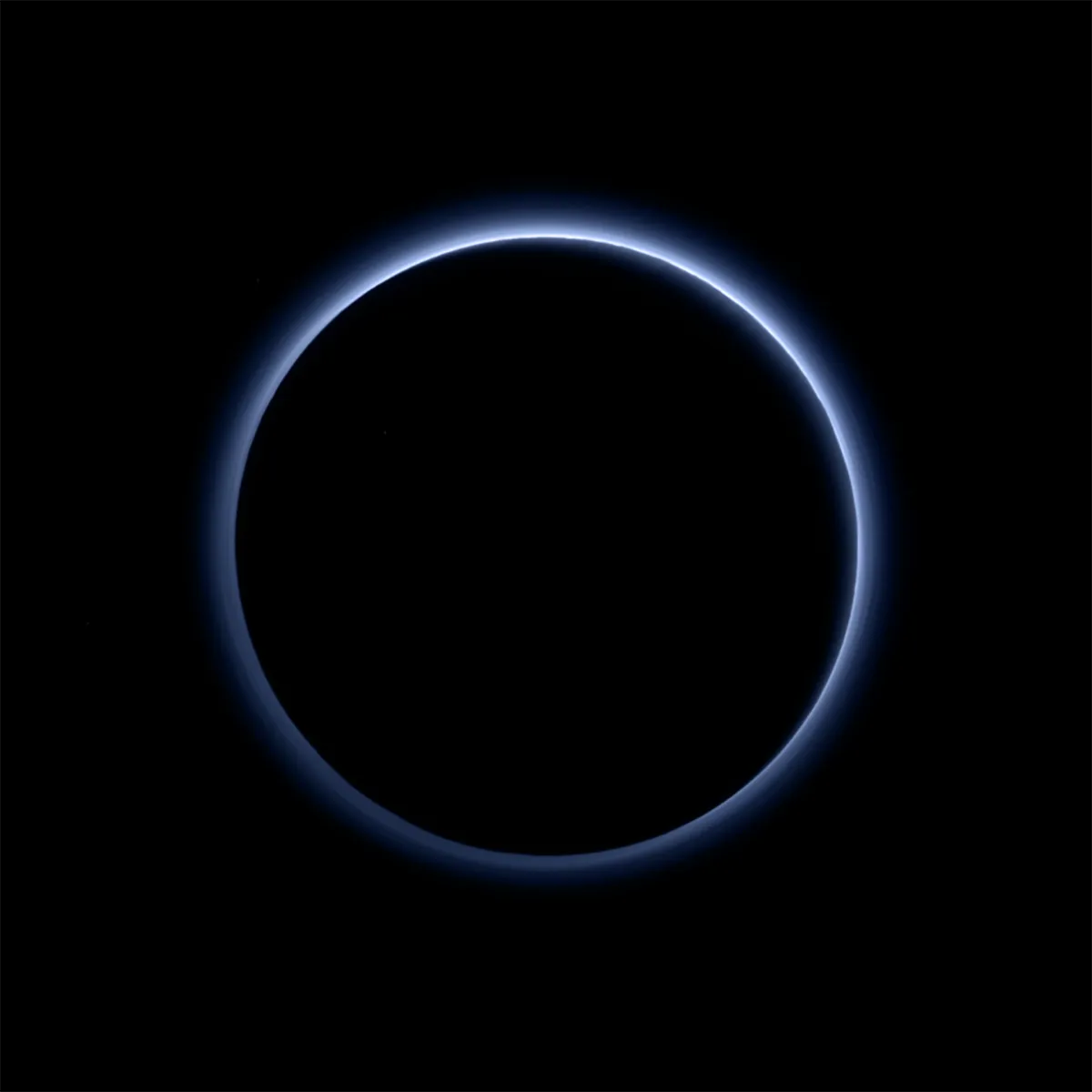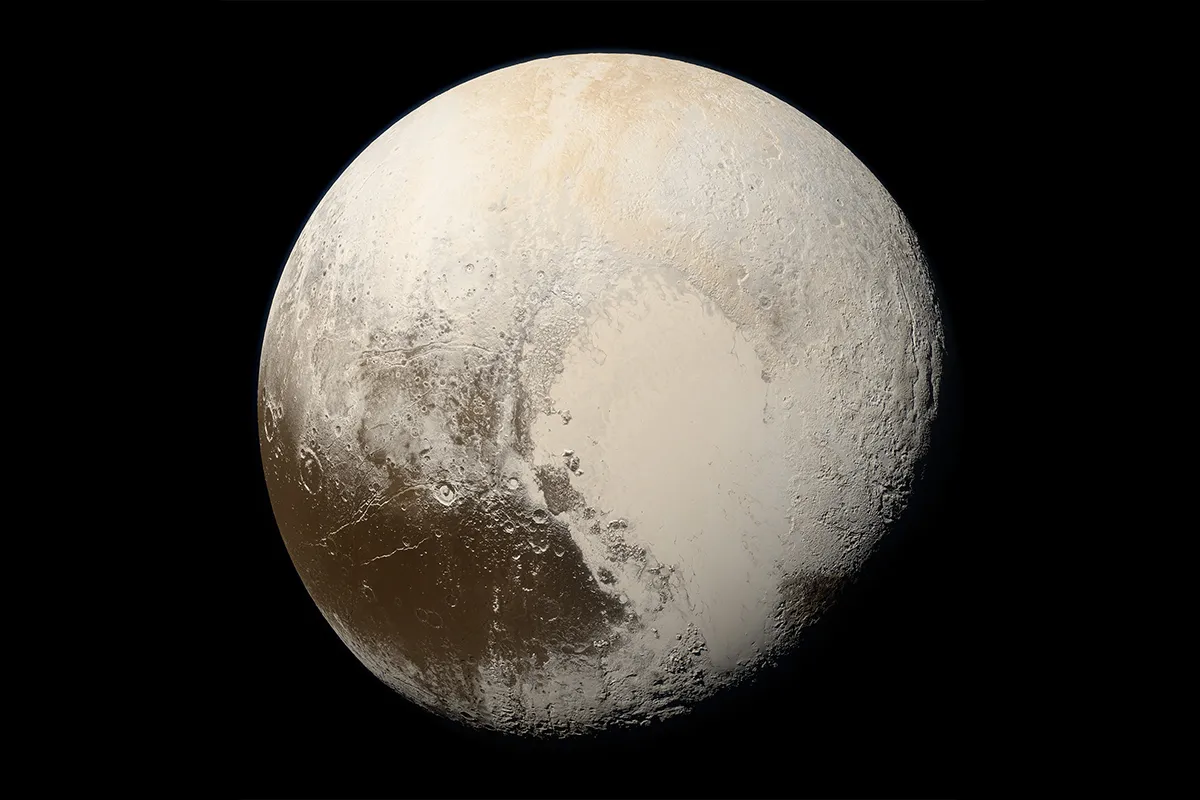During July 2023, Pluto has move into a barren region of sky to the east of the Teapot asterism in Sagittarius, and reaches opposition on 22 July 2023.
At an eye-wateringly faint mag. +14.4 and having a relatively low altitude from the UK, you’ll need a decent-sized telescope to see it visually – 300mm minimum, although larger will make the task that much easier.
Pluto can be a tough target, especially when low in a less than pristine sky.
Despite this, trying to locate this tiny world remains a popular challenge with amateur kit.
In July 2023 it's in a barren area on the Capricornus–Sagittarius border, but there are some patterns that will make observing and photographing a bit easier than you might think.

Pluto has a diameter of 2,476km and a 17.2°-inclined, elliptical orbit that takes it out as far as 49.3 AU from the Sun and in as close as 29.7 AU.
When it’s near to this perihelion, Pluto can be closer than the most distant major planet in the Solar System, Neptune, which orbits the Sun with an average distance of 30.1 AU.
Pluto performs this swap once every 248 years, staying closer to the Sun than Neptune for around 20 years. The last time it occurred was between 1979 and 1999.
Being so distant and small, through amateur scopes Pluto never looks anything more than a star-like dot, with its family of five natural satellites well beyond reach.
Despite this, locating and recording Pluto remains a popular challenge using amateur equipment.
One of the best ways to ‘see’ Pluto is to use a camera, so let's take a look at how exactly you can do that.

Photographing Pluto at opposition
Using a camera is one of the best ways to see Pluto, and comes with the obvious advantage of giving you the opportunity to capture a photo of the dwarf planet.
To photograph Pluto, you don’t need anything fancy.
A tracking mount is recommended, although if you don’t mind a bit of noise, a high ISO setting may still grab a result even using a static platform such as a tripod.
A 200mm or longer lens will capture a decent shot of the Pluto star field.
If you can get several shots over separate nights it should be possible to reveal the motion of Pluto by blinking between the images.
Finding Pluto, step-by-step

The key to locating Pluto in 2023 will be to use a small kite-shaped asterism formed by the stars 58, 59, 60 and 62 Sagittarii.
These shine at magnitudes +4.7, +4.5, +4.4 and +4.8 and so aren’t particularly hard to see, all being naked-eye stars.
Look for them 12° west of the southern tip of Capricornus as marked by mag. +4.1 Omega (ω) Capricorni.
Incidentally, 58 Sagittarii is also known as Omega (ω) Sagittarii.
Once you’ve located this pattern, head north from 62 Sagittarii for 2.5x the length of the kite pattern (62–58 Sagittarii, 2.1°).
This will bring you to a triangle of sixth-magnitude stars 1.1° to the southwest of the mag. +8.6 globular cluster M75.

The stars are HIP 98785 (mag. +6.4), HIP 98575 (mag. +6.0) and HIP 98399 (mag. +6.8).
For ease, let’s refer to them as A, B and C respectively.
If you extend the line from C to A for the same distance again, you’ll arrive where Pluto begins its July track.
Throughout the month it covers a distance from its starting point parallel with and of the same distance as A–B.
As long as your camera can cover the area described and can record stars down to mag. +15, you should be able to capture Pluto as a dot.
To do this with a general photographic lens, open the lens fully (perhaps closing by a stop or two if the lens distorts badly).
Use a mid to high ISO and bracket exposures around, for example, 10, 20 or 30 seconds.
Have you managed to observe or photograph Pluto? Let us know by emailing us at contacus@skyatnightmagazine.com.
